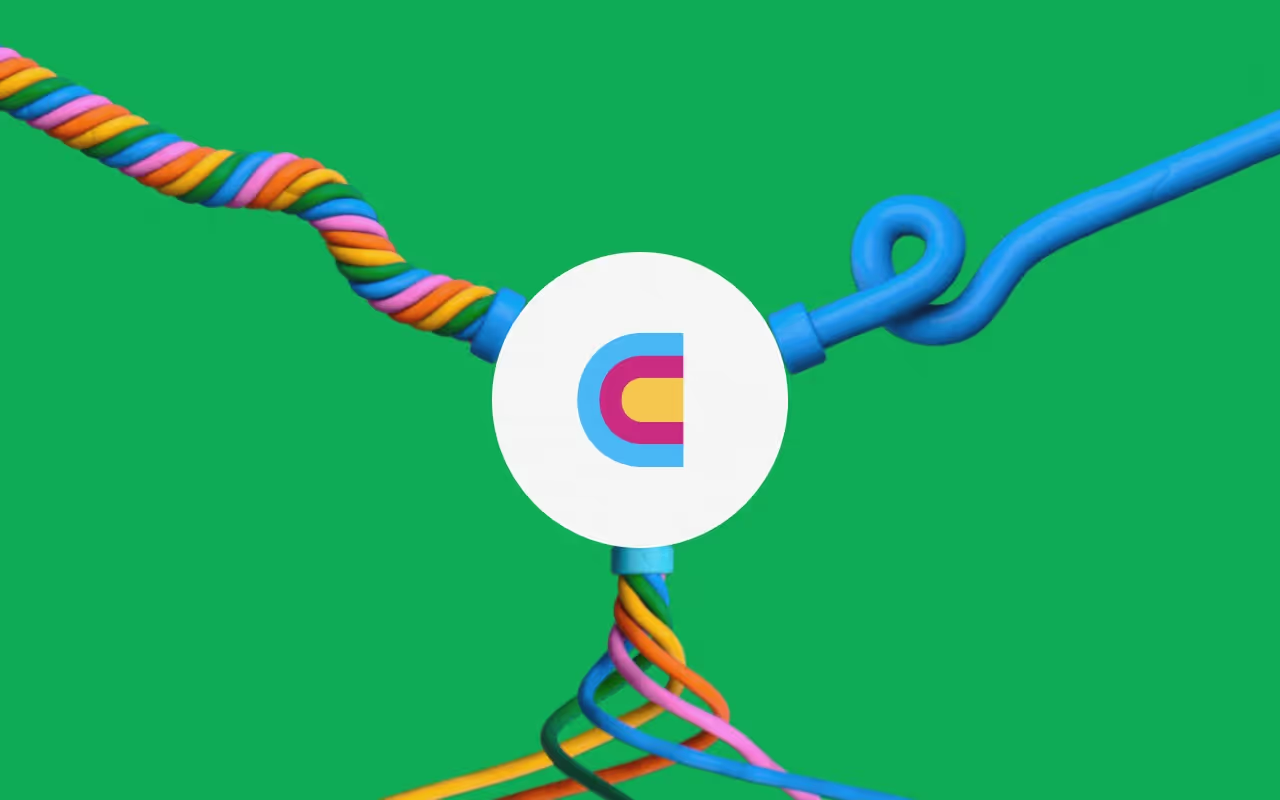🚀 Advanced TAM Sourcing Techniques: Winning Market Intelligence
Introduction
In the last lesson, we covered how to build core TAM sourcing workflows using Clay's foundational dataset and enrichment capabilities. Now we're diving into advanced techniques that separate good TAM sourcing from truly distinguished market intelligence.
We'll explore AI-powered custom research, dynamic scoring models, and automated monitoring systems that keep your TAM fresh and actionable. These advanced capabilities transform static prospect lists into living intelligence systems that identify opportunities before your competitors even know they exist.
🔬 Custom Research Beyond Basic Firmographics
Traditional TAM sourcing stops at basic firmographic data: company size, industry, location. These demographic filters create a starting point, but winning companies find ways to extract custom insights their competitors can't access.
Technographic Intelligence
Let's say you're selling marketing automation software. Instead of broadly targeting marketing teams at SaaS companies, you can use HG Insights “Verify Tech Stack” to understand each company's current marketing tech stack, identifying whether they use competing or complementary tools.
This technographic intelligence reveals specific integration opportunities, competitive displacement scenarios, and potential gaps that create natural conversation starters.
Automated Content Monitoring
You can set up automated scraping of prospects' pricing pages, product blogs, and careers sections to detect strategic changes in real-time. When companies add enterprise pricing tiers, launch new product features, or post senior-level roles, these become immediate buying signals that indicate growth, investment capacity, and organizational priorities.
With Clay, this research happens automatically on whatever schedule you configure, ensuring you catch and surface opportunities at the perfect moment.
📊 Building Custom Signal Systems
Clay enables you to turn any enrichment into an automated signal that triggers downstream actions. Here's how the technical implementation works:
Map out the output of your enrichment and send that data point to another table that serves as your historical log, making sure to capture timestamps for each data point. In the original table, navigate to Table Settings and configure scheduled re-runs for the columns you want to monitor.
To detect changes over time, pull the data into your monitoring table and use formulas to measure differences between the most recent data points and previous values. When a change is detected—a new job posting, pricing change, or technology adoption—you can leverage that signal to trigger downstream actions like sending Slack notifications, updating CRM records, or initiating outreach sequences.
For more information: https://www.clay.com/university/guide/custom-signals
Pre-Built Social Signals
Clay's out-of-the-box custom signals allow you to easily monitor social activity across LinkedIn, Twitter, Reddit, and GitHub, among many other platforms. This social listening identifies companies experiencing relevant pain points, discussing competitive alternatives, or showing public interest in solutions like yours.
For example, monitoring GitHub activity might reveal when companies start experimenting with open-source alternatives to your category, providing perfect timing for outreach about enterprise solutions.
🎯 Intelligent Prioritization Through Scoring
Beyond speed, modern GTM teams need intelligent prioritization mechanisms. Not all TAM accounts are created equal, and effective account-based research requires sophisticated scoring to identify your highest-value opportunities.
Multi-Factor Scoring Models
Build scoring systems that combine multiple data points into a single prioritization metric. You can assign weights to different factors collected from your enrichments. For example:
- Growth rate (20% of score): Revenue growth and headcount expansion
- Technology fit (25% of score): Current tech stack compatibility
- Recent funding (15% of score): Capital raised in last 12 months
- Executive changes (10% of score): New leadership indicating strategic shifts
- Competitive position (30% of score): Market share and competitive dynamics
Clay automatically calculates composite scores across your entire TAM, ranking accounts by total score and enabling data-driven prioritization. Sales teams can focus on highest-scoring accounts first, dramatically improving conversion rates and pipeline efficiency.
As your enrichment data updates, scores automatically recalculate.
🎬 Systematic Action Frameworks
Having sophisticated market intelligence only matters if you systematically act on these insights. Clay enables automated routing that ensures appropriate treatment for different account tiers.
Tiered Account Routing
Automatically route accounts to appropriate sales motions based on their composite scores:
- Tier 1 accounts (scores 80-100): Personalized outreach from senior reps with custom research
- Tier 2 accounts (scores 60-79): Standard sequences with targeted messaging
- Tier 3 accounts (scores below 60): Broader marketing campaigns and nurture tracks
This systematic routing ensures your highest-value opportunities get appropriate attention while maintaining efficiency across your entire TAM.
For more information on lead routing: https://www.clay.com/university/lesson/lead-routing-inbound-automation
🔍 From Broad TAM to Precise ICP
Most teams think too broadly about their target market and miss the nuanced segmentation that drives superior results. Effective TAM sourcing requires moving from demographic breadth to behavioral precision.
The Refinement Process
Start with broad industry and company size parameters, then systematically layer in behavioral signals, technology usage patterns, and growth indicators that reveal buying readiness.
For example, your initial segmentation might look like this:
Broad TAM: B2B SaaS companies with 100-500 employees (potentially tens of thousands of companies)
Refined ICP: B2B SaaS companies with 100-500 employees, using Salesforce, recently raised Series A/B funding, actively hiring for revenue operations roles (perhaps hundreds of high-fit companies)
This refinement transforms an overwhelming universe of potential prospects into a manageable set of high-probability opportunities that share specific characteristics indicating buying readiness and budget availability.
AI-Powered Tier Classification
Create sophisticated account tiers using AI formulas that consider deal size potential, sales cycle complexity, and resource requirements. Clay automatically classifies accounts, ensuring each receives appropriate sales treatment:
`AI Classification Prompt: "Based on this company data:
- Employee count: {{Headcount}}
- Revenue estimate: {{Revenue}}
- Tech stack complexity: {{Current Tools}}
- Growth signals: {{Funding + Hiring}}
Classify as: Enterprise, Mid-Market, or SMBRecommend sales approach and expected deal size"`
This automated classification might entail:
- Enterprise prospects (1000+ employees): Field sales with custom demos and strategic approach
- Mid-market prospects (100-500 employees): Inside sales with standard demos and consultative selling
- SMB prospects (under 100 employees): Self-serve or low-touch sales with product-led growth
Performance Pattern Analysis
Continuously analyze conversion patterns across regions, verticals, company sizes, and technology environments. This analysis reveals which segments convert fastest, generate largest deals, and provide highest lifetime value, insights that should inform ongoing TAM refinement and resource allocation.
🔄 Maintaining TAM Freshness Through Automation
Static TAM maps become outdated quickly in dynamic markets. Build systematic refresh mechanisms to ensure your intelligence remains current and actionable.
Automated Data Refresh
Set up automated workflows that refresh TAM data on regular schedules—daily, weekly, or monthly depending on your market's velocity. Company information changes constantly through funding events, executive transitions, product launches, and competitive shifts.
Change Detection and Alerting
Build monitoring systems, i.e. Slack alerts, that notify you of significant account changes requiring immediate attention. When companies raise funding rounds, hire new CROs, launch competitive products, or experience other material changes, you need immediate notification to capitalize on timing advantages.
✅ Key Takeaways
Advanced TAM sourcing techniques transform basic prospect lists into sophisticated market intelligence systems.
Multi-factor scoring models enable intelligent prioritization across your entire TAM, ensuring sales resources focus on highest-probability opportunities. Automated routing and tier classification ensure appropriate treatment for different account segments.
Ready to activate your intelligence? In our next lesson, we'll walk through integrating these TAM sourcing techniques with your sales tools, creating complete workflows that transform rich market intelligence into qualified pipeline and revenue results.
Connect, explore and learn together
Read our GTM blog, or try out our top Claybooks and templates to transform your growth ideas into outreach in minutes.





















